The Reference linking is a unique characteristic for the nano EDGE ENGINE, and it offers an exceptionally user friendly experience while creating applications.
Linking within applications, built with the nano EDGE ENGINE, may be performed twofold:
-
using a special Reference link designed specifically to connect Data Point class components (in the Applications container) with network point class components (in the Networks container);
-
using a standard linking method, which involves simple creating links between the input and output slots; a standard link transfers a value between the connected slots. Standard linking may be applied between all four containers of the nano EDGE ENGINE device structure.
Reference Linking
The nano EDGE ENGINE offers an innovative linking method called the Reference link.
The Reference linking method is unique for the nano EDGE ENGINE devices. Is it designed to link Data Points with network points, and it offers much more advantage than the standard linking method.
The Reference link is a special compound link designed to connect Data Points with network points. The Reference link is created between special Reference slots and transfers values along with the component's status. Alternatively, it may transfer values between Data Points and network points at the same time returning status from network points to Data Points, or it may return values from network points to Data Points. As network points are situated in the Networks container and Data Points are situated in the Applications container, Reference links are created using the Link Mark and Link From options from the context menu, and they are created between the tabs (or, for example, between the Application tab and the network points expanded in the Workspace Tree window) or within the Workspace Tree window between Data Points in the Applications container and network points in the Networks container. Either way the Reference link between tabs is displayed in the Wire Sheet as a bubble connected to the component's Reference slot.
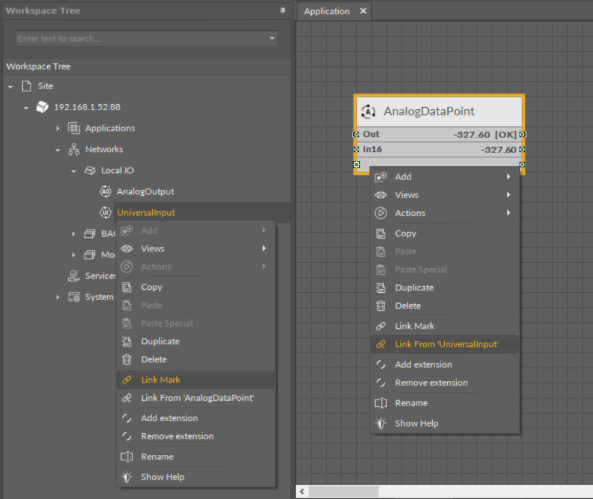
Link Mark-Link From options
The basic and exceptional feature of the Reference links is the fact that they are made to transfer the value along with the component's status. This feature gives a major advantage and translates to substantially enhanced functionality of linking. The fact of transferring the Status along with component's value is exceptionally important for the functionality of Data Points. Data Points are central elements in the nano EDGE ENGINE applications, and they represent values in applications on the Wire Sheet. Therefore, displaying network point's status makes the Data Point much more informative, and allows to display this important information directly in the Wire Sheet.
Data Point and the Input-type Network Point Links
If the Data Point is linked with the input-type network point, the Reference link transfers the network point's value and status to the Data Point (if the Data Point has a priorities array extension added, there is also the option to set the Input Priority slot in the network point, which defines the input priority in the Data Point receiving the value from the network point). In this variant, the Reference link is unidirectional, and provides the information about the change of value and the network point's status.

Data Point and the input-type network point links
If the Data Point is linked with the output-type network point (or network points), it offers even more advantages.
Data Point and the Output-type Network Point Links
-
First of all, in such case, the Reference link behaves bidirectionally. It transfers the value from the Data Point to the network point, and in turn it informs whether the value has been correctly received by the network point by sending back the network point's status. This hugely advantageous feature allows to instantly identify that at least one of the linked network points has gone into the fault status.
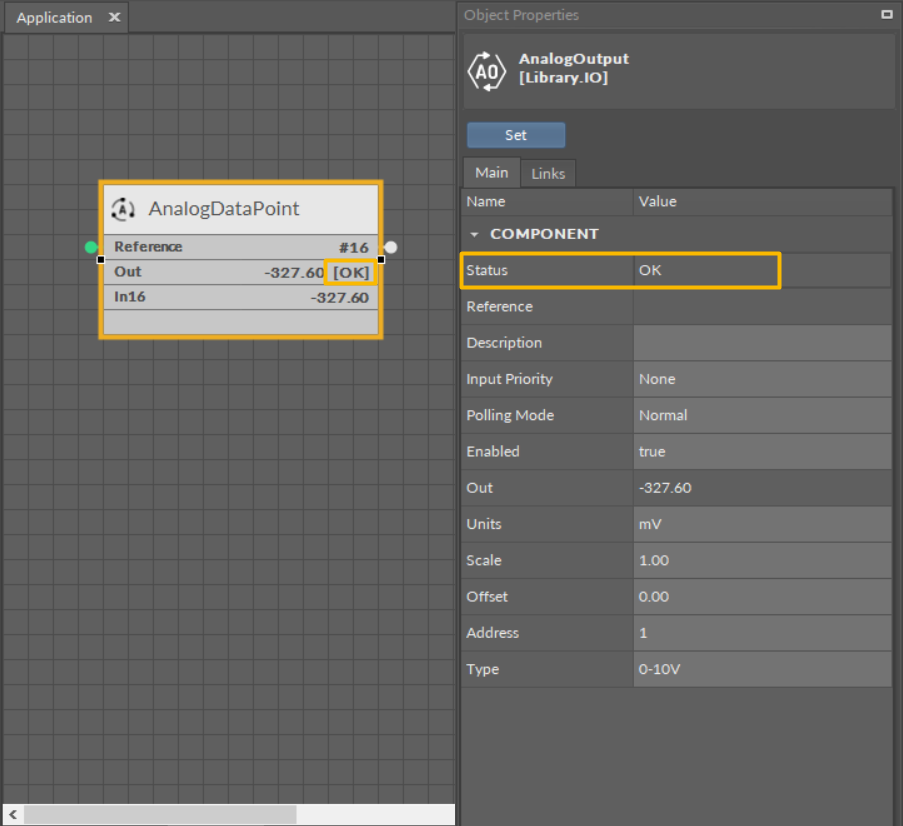
Output-type network point (status OK) referenced to the Data Point
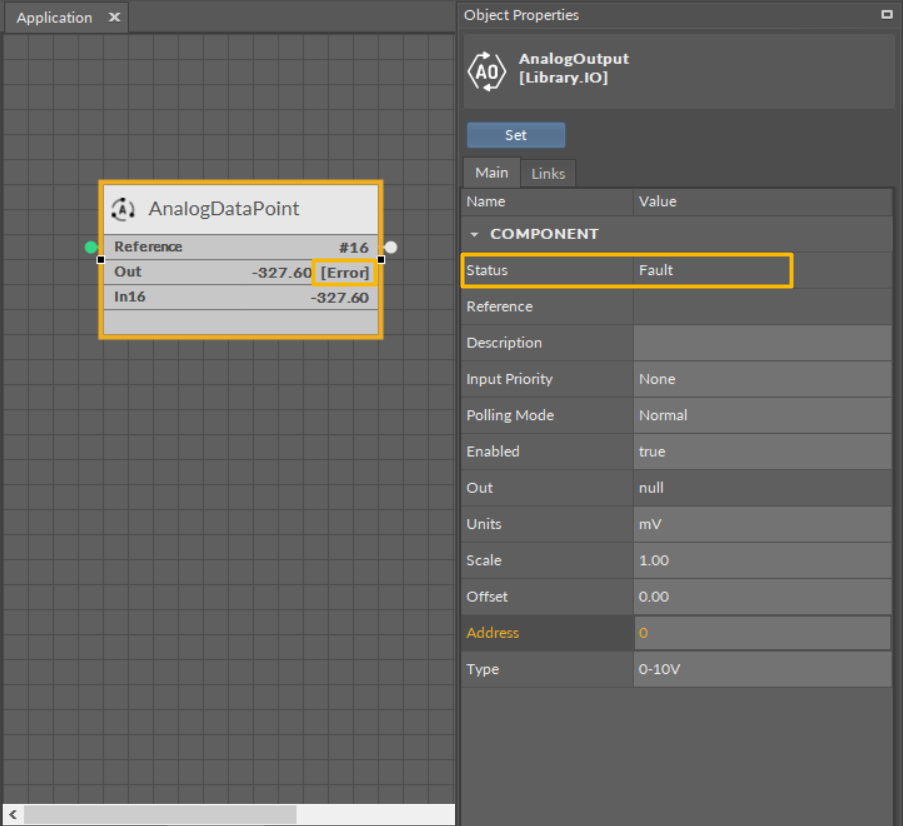
Output-type network point in the Fault status returning an Error status to the referenced Data Point
-
Another innovative feature of the Reference linking is that the Reference link is able not only to return status from the network point but also to return its value. The network point's slot, Input Priority, is designed to identify the Data Point's priority, which the network point will transfer its value back to. For example, if the network point's Input Priority slot is set to In16, it will transfer its value back to the Data Point's 16th priority slot. In turn, if this value is the highest priority for the Data Point, it can distribute it to all network points linked with the Reference link. This way, if there are more output-type network points linked with the Data Point, and one of them changes its value and sends it back to the Data Point, thanks to the bidirectional Reference link, the Data Point can synchronize values in all linked network points.

The Reference links between the Data Point and output-type network points

Values distributed from the Data Point to the referenced output-type network points
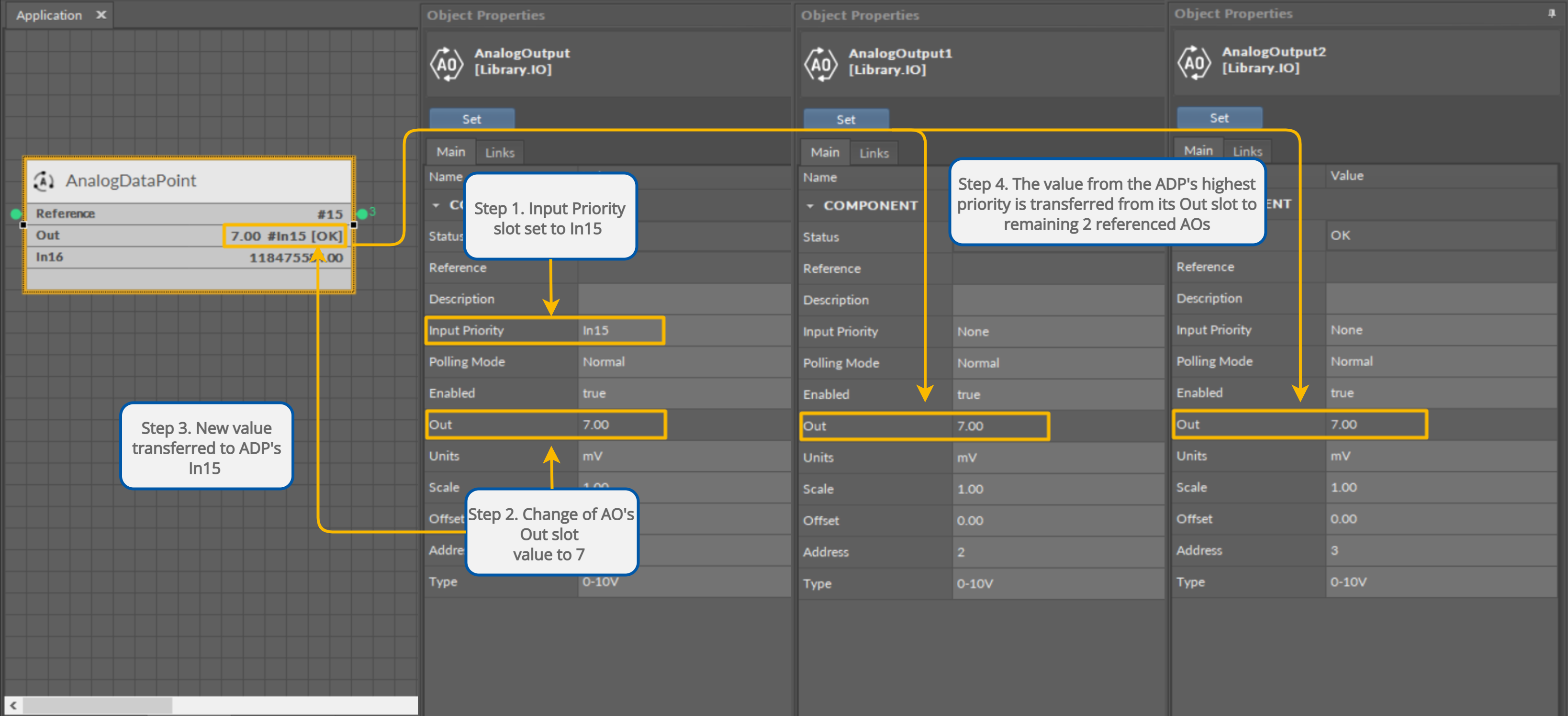
Value sent back to the specified input priority in the Data Point and distributed to remaining referenced output-type network points
The Reference linking is recommended for linking components in the Applications with components in the Networks container.
-
Using the Link Mark and Link From options from the context menu of network points and Data Points that are to be linked, opens the dialog window, which allows to select Reference slots on both sides of the link:

The linking dialog window
-
As the Reference links connect elements from the Applications container (Data Points) and the Networks container (network points), in the Wire sheet they are displayed as bubbles: on the left side of the Reference slot for the input-type linking, and on the right side of the Reference slot for the output-type linking:
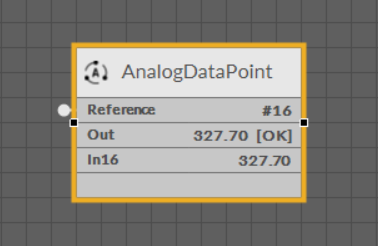
Analog Data Point linked from the Universal Input
-
The details of the Reference links are always visible in the Links tab in the Object Properties window of the linked element:
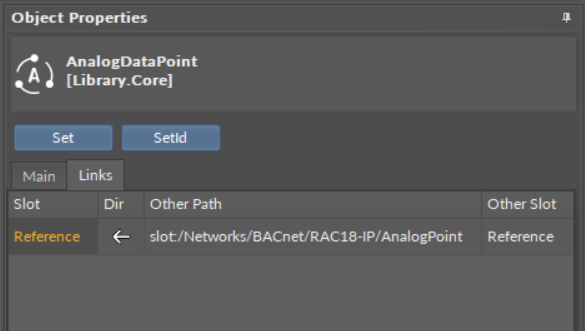
The Reference link path
